Field artillery. Ammunition and Auxiliary Systems
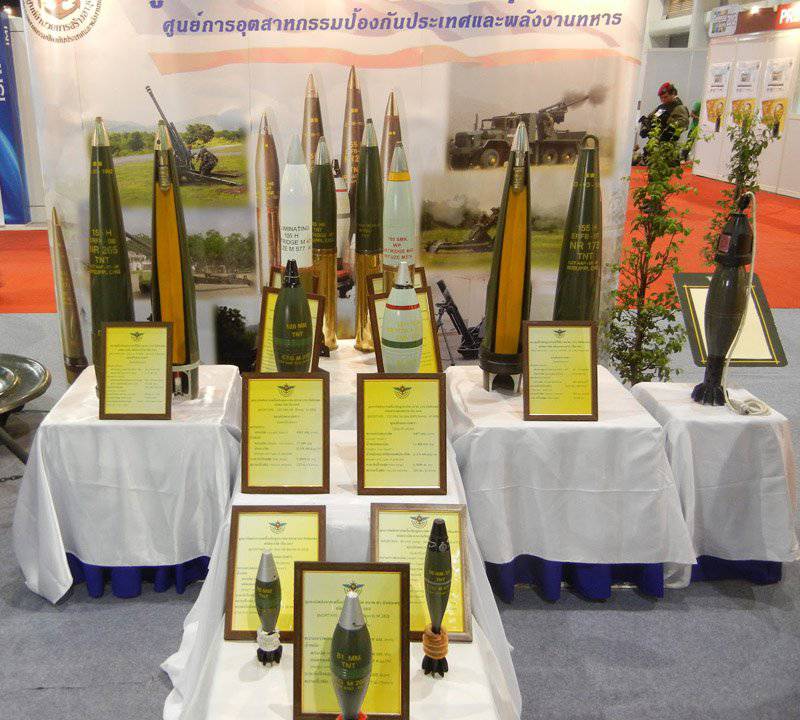
Artillery ammunition of various sizes represented by the Ministry of Defense of Thailand
The “battle queen” absorbs technologies characterizing military operations in the XNUMXst century, from high-precision guidance to a wireless network. The artillery also confirmed its adaptability to the limitations of the “war among people”, in which it is very important to win the hearts and minds of civilians. Artillery shells can be fully attributed to low-cost weapons with little indirect damage. Firstly, compared to conventional aviation they have less explosive charge with bombs, and, secondly, they are cheaper than guided missiles.
Unmanaged artillery, in its essence, cannot be attributed to high-precision weapons, but, nevertheless, the basic accuracy has increased due to improved production of cannons and shells. More information about the target, more accurate geolocation of the gun and orientation, more accurate monitoring and weather forecasting, real-time measurement of the initial velocity of the projectile and induction installation of intelligent fuses, plus integration with the combat information and control systems also allow the calculation of the gun to conduct more responsive, accurate and effective fire than ever before. The development of guided artillery ammunition proceeds in two directions: specially developed precision-guided munitions with excellent accuracy and the corresponding high price, and relatively cheap course correction kits that make "stupid" shells smarter.
Accuracy Above All
Currently, the important decisions facing the military around the world, particularly in countries that flaunt themselves with austerity, concern priorities. In March, 2013, the organizer of the Future Artillery conference, Defense IQ, conducted a survey among delegates with a request to put the problems of this branch of service in order of importance. Precision munitions were at the top of the list, followed by digital targeting.
Circular Probable Deviation (QUO), defined as the radius of the circle within which 50% of the shells fired, will land, is a standard measure of the accuracy of artillery shells, mortar bombs, air bombs, unguided and guided missiles. Since the introduction of the M-712 COPPERHEAD munition (first used in Operation Desert Storm) and its Russian equivalent 3ОФХNUMX Krasnopol, laser-guided artillery shells have already recorded the direct hits on moving armored vehicles, which is necessary for the CMS about one or two meters depending on the purpose. It is worth recalling that the tank T-39, for example, has a body approximately 72 meters long and 7 meters wide.
To achieve this accuracy, a target detection device associated with the guidance system and control (aerodynamic) surfaces with significant maneuvering capabilities are needed. In fact, these requirements lead designers to the development of guided missiles launched from cannons with the cost and complexity arising from this, but, nevertheless, the development of such systems continues.
For example, the Nexter / Thales high precision 155-mm projectile MPM projectile is an experimental high-precision guided munition with a strap-shaped homing head with a semi-active laser, for which the company announces a CVT in the 1 meter. The Russian KBP offers a modernized version of the Krasnopol shell; whereas Norinco offers GP1 and GP6; Serbian company BNT reportedly delivered a laser-guided X-NUMX projectile laser to the Ukrainian artillery corps at the end of 2012; Malaysia has shown an experimental projectile TAMING SARI XK152; and in March, Iranian television "Press TV" showed a report on the laser-guided missile BASIR.
GPS guidance with inertial redundancy, finally, also reached 155-mm artillery shells, which was largely contributed to the success of the Joint Direct Attack Munition (JDAM) aerial delivery family of ammunition. The great advantage of such projectiles is their immunity to weather conditions affecting the laser-guided systems. However, against moving targets, they are not as effective as laser-guided munitions.
GPS / INS is used in Raytheon M982 EXCALIBUR and advanced ship projectiles, such as LRLAP (Long Range Land Attack Projectile) from BAE Systems / Lockheed Martin with a rocket booster and VULCANO from Oto Melara / Diehl. All of them were originally created as VUBs with a very small QUO; for example, EXCALIBUR and LRLAP have QN 4 and 5 meters, respectively, regardless of the range.
China is also reportedly developing 155-mm VUB with guidance on the global satellite navigation system (GNSS) and inertial navigation system. The projectile, designated WS-35, is attributed to China Aerospace Science and Technology Corporation.
“We don’t shoot them very often because of their high cost,” said senior sergeant of the American army, Ralph Dabrovolny, platoon sergeant. He was referring to the EXCALIBUR projectile, with which he fired a M777 howitzer at the advance base in Kandahar on January 20. “They are firing for the most part because of their accuracy when they want to limit the indirect losses and damage that field artillery could cause.”
One EXCALIBUR projectile costs about 80000 dollars, a projectile with a PGK kit (for precision-guided unguided projectiles) is reportedly less than 3000 dollars and an unguided projectile is about 300 dollars.
The SMArt 155 ammunition for GPS-controlled salvo fire system (GMLRS), created by Diehl Defense and Rheinmetall, with a touch fuse and two submarines, provides artillery with a long-range projectile for direct targeting of stationary and mobile single targets in depth, while largely reducing indirect losses. Equipped with highly efficient sensors and an intelligent signal processing system, the ammunition can reliably identify armored combat vehicles, distinguish them from false targets, and accurately hit them even on difficult terrain and under bad weather conditions. To avoid unexploded ordnance, submarines contain a mechanism of excessive self-destruction. This ammunition was purchased by Germany, Greece and Switzerland. Being a precision munition, SMArt 155 does not fall under the Oslo Convention.
Roketsan offers 107-mm, 122-mm, 300-mm and 600-mm missiles, both unmanaged and guided.
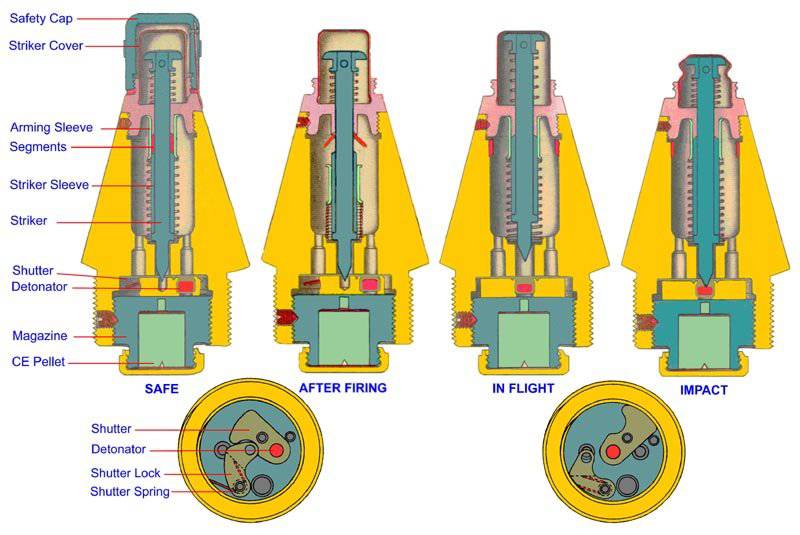
Fuse operation scheme
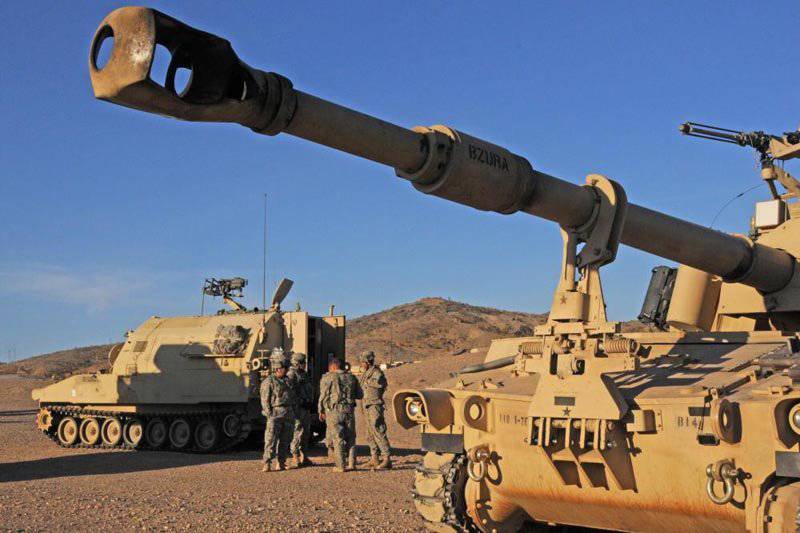
Soldiers from the Dagger brigade are standing in front of a transport-loading vehicle that drives up M-109A6 PALADIN howitzer ammunition (in the foreground). A team took part in a training exercise at the Fort Irvine National Training Center 23 February 2013
Accurate, but not very
Works aimed at bridging a large gap in accuracy and price between high-precision weapons and unguided artillery shells focus on fuses with course correction CCF (Course Correcting Fuse). In these fuses, the navigation source and small control surfaces are combined into a single unit, which is installed in place of the conventional standard artillery shells fuse. To calculate the predicted meeting point in the CCF, the programmed ballistic characteristics of the projectile plus the measurements of coordinates and speed are used. Then the course correction is performed in order to bring the preliminary calculations as close as possible to the programmed aiming point.
The ATK's PGK (Precision Guidance Kit) precision guidance kit uses a GPS sensor and rotating nose steering surfaces. Its official QUO is less than 50 meters, but recent training firing in Afghanistan has shown significantly better QUO. American soldiers from the 15-th field artillery regiment at the advanced base of Boris shot five shells that fell within 25 radius m from the target and within 5 meters from each other.
“Our shells always reach the goal, this is what we are proud of as a platoon,” said expert Eyvan Clayton, operator of the field artillery fire control system. “The spectacle of how PGK projectiles fly into each other, projectile behind projectile, was definitely impressive. Accuracy was definitely worth seeing. ”
Israel Aerospace Industries (IAI) claims a QUO "less than 10 meters at any range" for its TOP GUN CCF fuse with a dual sensor (GPS / INS), and Nexter says more modest 95 meters by 34 km for its fuse SPACIDO. However, SPACIDO has a GPS-independent guidance system, relying on Doppler radar.
TALIN takes aim
One way to improve the accuracy of artillery shells, including shells equipped with CCF, is to improve the pointing of the gun. The US Army has taken a big step in this direction by equipping its lightweight 105-mm howitzer M119A3 digital SLA and artillery advanced tactical land-based aTALIN (artillery Tactical Advanced Land Navigator) from Honeywell, a highly efficient hybrid system. This device, they say in the company, reduces setup and calibration time, while providing accuracy less than 1 milliradians (1 thousandth). In addition, aTALIN incorporates Honeywell's latest RLG (Ring Laser Gyro) ring laser gyroscope and accelerometer with integrated GPS receiver.
On May 13, Honeywell announced that the 3 Battalion of the 319 Airborne Regiment was the first unit to receive aTALIN howitzers M119A3.
“The ALPHA Three platform has a fire control computer that was not on the ALPHA Two platform; everything was done more complicatedly or manually, ”said Sergeant Gary Hedrick from the third battalion of this regiment. “The new platform also has a GPS system (it does not use military GPS receivers PLGR or DAGR), which constantly shows its location and current azimuth. It also has a built-in radio system for receiving and sending data to our fire control center. ”
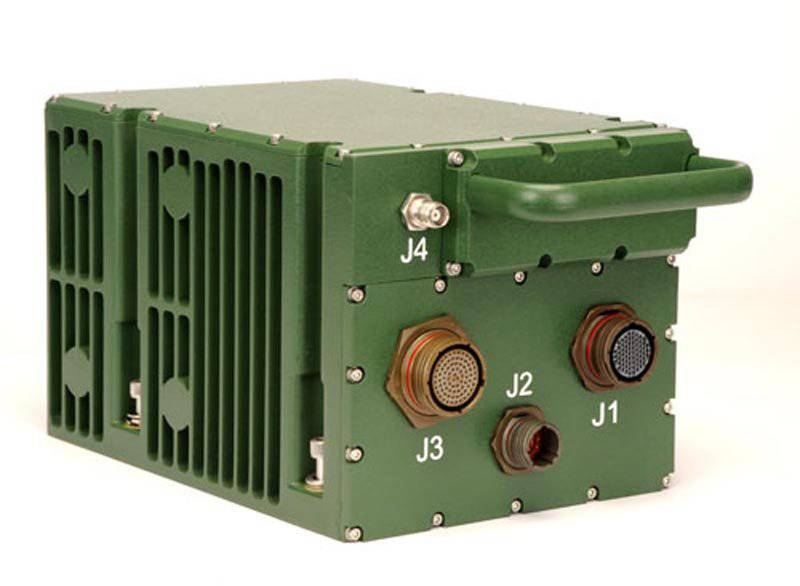
The main unit of the TMAPS system from IAI Tamam
TMAPS system from IAI Tamam
The Israeli Ministry of Defense also invests in such systems and in January 2013 of the year issued a Tamam division of IAI to a multi-year contract worth 40 million dollars for the manufacture of a modular azimuthal positioning system (TMAPS) for installation on the Israeli army’s M155 109. This inertial navigation system is based on Tamam's RLG technology, providing positioning, guidance, direction and orientation data. It can also be installed on various platforms, including towed guns, artillery detection radar, rocket launchers, mortars, observation vehicles, etc.
Using digital maps, TMAPS is usually sighted with an accuracy of one thousand rms thousandth in seven minutes, correcting inertial errors using information from internal or external GPS (if available), odometer and zero speed corrections from the Kalman program filter, which allows to get the most accurate solution from all available.
For navigation and control systems, TMAPS provides output data in a digital format, including horizontal position and altitude, azimuth, roll, angular and straight-line speeds. Communication interfaces include RS-422 and RS-232 serial ports, fast Ethernet and an optional Mil Std 1553B bus. The unit has dimensions 296 x 170 x 158 mm and weighs 8,6 kg.
New gyrocompass
Finding true and true north quickly and accurately is also important to improve the accuracy of artillery fire. In October last year, IAI Tamam introduced new gyrocompasses, free from restrictions on international trade rules. weapons NFS-R (NFS-200) and ANFS (NFS-100), based on RLG using Fiber-Optic Gyro (FOG) fiber-optic gyro technology.
The NFS-R gyrocompass weighs 6,7 kg, typical power consumption is 34 W, it is designed for use with long-range rocket launchers and receiver artillery. It has an 1 accuracy - 2 billion and reaction time from three to eight minutes. The lighter and more compact ANFS is designed for towed and self-propelled artillery, gun guidance systems and electronic theodolites. The most productive device in the new family is NFS-300 with the following main parameters: 0,5-2,0 milliard, 2,5-3 minutes, 6,7 kg and 30 watts.
SIGMA 30-700
Sagem also added the SIGMA 30 to its line of artillery navigation and targeting systems, launching the SIGMA 2013-30 for long-range guns, including 700 caliber weapons, at the end of September 52. The SIGMA 30-700 uses the same digital RLG technology with a long optical path (32 cm) as in other products. The system with an independent GPS system is accurate enough for a counter-battery fire and for the guidance of a long-range air defense radar, Sagem reports.
The company describes the SIGMA 30 family as a simple solution for towed, tracked, and mounted howitzers, MLRS, mortars and light cannons mounted on the truck chassis. Sagem does not name the numbers for the 30-700 variant, but the characteristics for the Sigma 30-600 are known and are the mean-square 0,5 mil in azimuth, 0,35 mil in elevation, 0,05% horizontal error and 0,02% vertical error.
Any system in the SIGMA 30 family can also function as a static gyro compass for two minutes, can provide motion corrections and autonomous navigation without GPS, besides, it simplifies shot and drive operations and allows you to fire in MRSI mode (Multiple Rounds Simultaneous Impact - the simultaneous impact of several projectiles. The angle of inclination of the barrel changes and all projectiles fired at a certain time interval arrive at the target simultaneously.
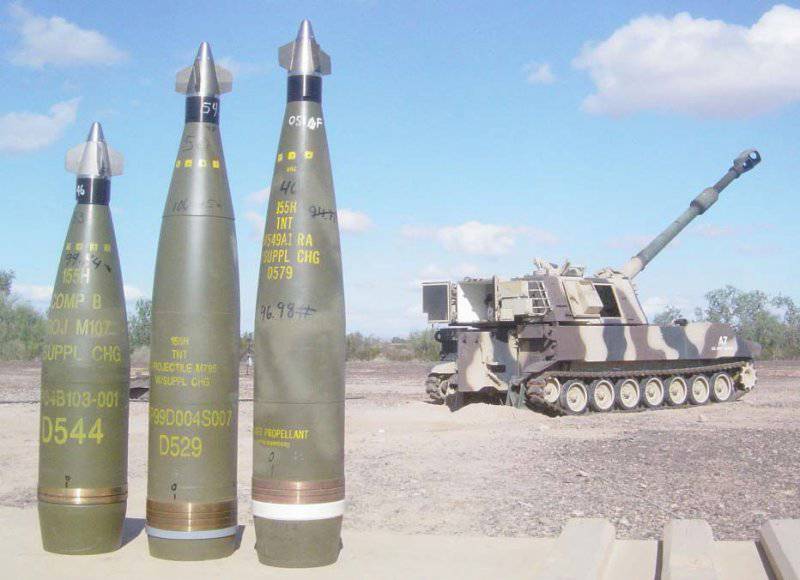
Ammunition 120-mm MGK and 155-mm PGK from ATK. Based on the ATK Precision Guidance Kit (PGK) for the 155-mm artillery shells, the XM395 combines GPS guidance and steering surfaces in one set. This kit replaces standard fuses, transforming existing 120-mm mortar rounds into precision guided munitions. This approach, based on the use of the previous construction (and not on re-creating it), has reduced the schedule and cost of development
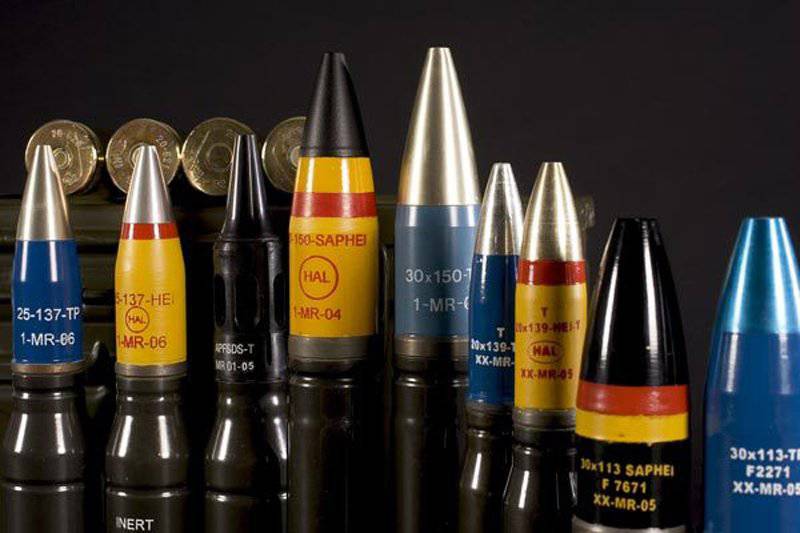
Artillery ammunition from the company Nexter
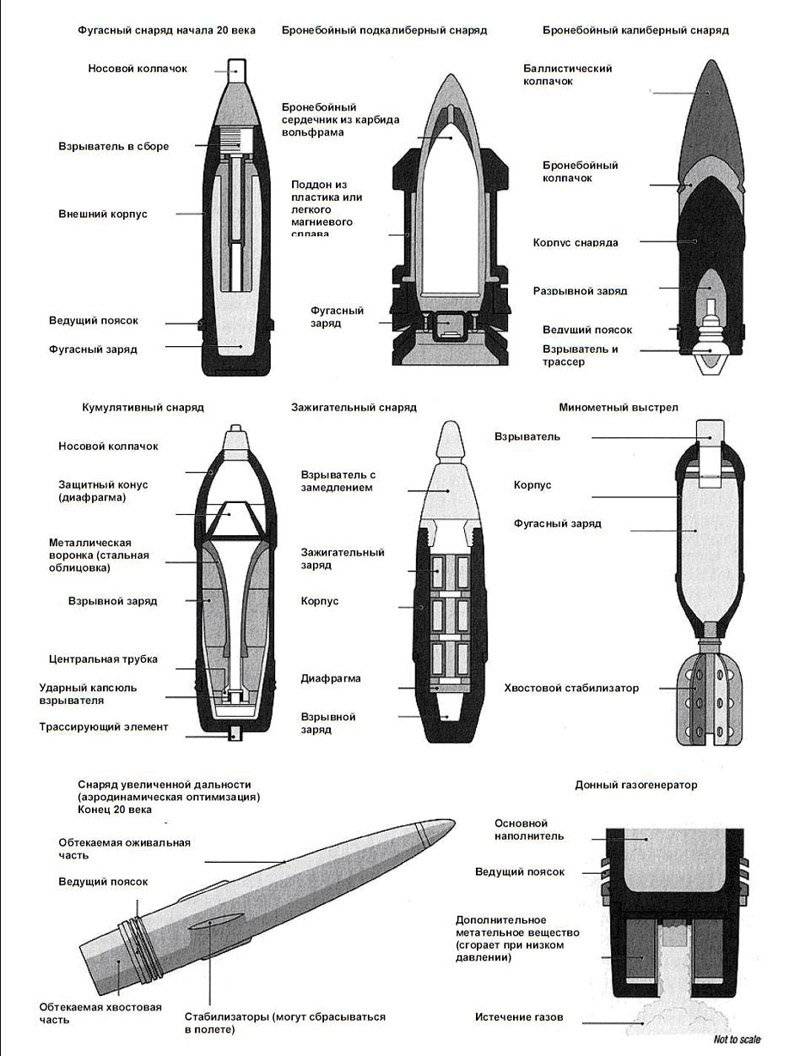
Artillery shells were used to deliver a wide variety of warheads, from small ammunition such as ready-made destructive elements or sub-shells to chemical and even propaganda leaflets. Improvements in ammunition design have recently allowed artillery to double its range without major technological innovations.
Export shipments LINAPS
In early May, Selex ES announced the sale of its LINAPS targeting artillery system to New Zealand, Poland and the UAE for various applications; the value of these contracts is estimated at more than 11,5 million euros.
The New Zealand Army buys complete LINAPS systems for its lightweight, towed L105 119-mm cannons, while the Polish army purchases RLG-based FIN3110 inertial navigation units for its AHS KRAB 155 X-diameter tracked howitzers of caliber. However, the most effective application for LINAPS is the Multiple Cradle Launcher (MCL) volley fire from the United Arab Emirates. This is a reactive 52-mm volley fire system with four independent rotary units on a low-bed semi-trailer manufactured by Jobaria Defense Systems. Each rotary installation consists of three modules for 122 rockets, that is, the total number of missiles per vehicle is 20 units. Each MCL machine must have five FIN240 units, one for each installation and one in the cab.
“Export markets are central to our business in the coming years, so these programs are particularly important,” said Alastair Morrison, senior vice president of the radar and advanced targeting division, adding that “LINAPS proved its ability to deliver accurate and reliable data in all combat operations and we are proud that artillery crews rely on this system. ”
Selex describes LINAPS as a proven autonomous navigation, target designation and weapon control system for artillery and mortar systems. LINAPS helps calculations to quickly bring a weapon to battle by eliminating the need to conduct instrumental reconnaissance, set sighting milestones, or select known remote objects as control points. Providing a constant 3D self-trapping with or without GPS, it also detects and displays elevation angles and bearing azimuth.
In the case of availability of a signal, GPS is the main element of positioning, but in the absence of GPS signals, the LINAPS system replaces them with data from the RLG system and the odometer of the car, if necessary, passed through a Kalman filter to obtain a mixed solution. Authorized users may have a FIN3110 device with a military GPS system built into its cover, and for others a coarse positioning facility is available.
Selex refers to the horizontal positioning accuracy of the CWO 10 meters when using GPS / INS, while it deteriorates to 25 m or 0,25% of the distance traveled (large value is taken into account) when relying on the INS (inertial system) and the odometer of the machine. The corresponding numbers for vertical positioning are 10 m and 0,15% of the distance covered. Pointing accuracy is less than 1 mil (RMS) and elevation accuracy is better than 0,5 mil. In the static position, the system is initiated in 10 minutes. In mobile applications, after switching on, it can be moved for 90 seconds, then it becomes fully operational after 10 minutes with a GPS signal.
LINAPS can perform standard for NATO or other ballistic calculations for firing direct and indirect fire, and can control the sensors of the gun, such as an initial-speed radar or a laser rangefinder. It can also interact with a wide range of radio stations to connect guns to tactical networks.
GPS assistance for the AFATDS system
Perhaps the most important types of systems that link guns into a single network are high-level coordinating systems, such as AFATDS (Advanced Field Artillery Tactical Data System - a modern tactical data system of field artillery) developed by Raytheon. This joint program of the American army, which generates a common operational image used to coordinate the various weapons systems. Raytheon is currently implementing the second part of a two-year contract with a total value of 81 million dollars to develop a new version of AFATDS (version 6.8X) whose aim is to improve and simplify the user interface while increasing the speed and capabilities of this system.
“Our system brings networking capabilities to the battlefield, front-line personnel, providing them with complete and accurate information about their environment,” said Kim Carrey, vice president of automated operations management at Raytheon. "Soldiers in the line of fire will be able to choose the right weapon for the right goals at the right time."
AFATDS interacts with all current and developed US fire support systems. AFATDS approved for sales abroad, it is also compatible with many allied systems of operational management of artillery.
One of the new features available in the entire AFATDS system will be GPS with network support (A-GPS). The A-GPS system is already available in commercial cellular networks; for its creation, special servers are used within the network to compensate for weak and / or intermittent satellite signals.
In the case of a strong signal, a single GPS receiver will turn on the initial fixed position after approx. 30-40 seconds, since it must download information from at least three satellites and the data transfer rate is very low. If the signal is interrupted during loading, the process begins anew. A-GPS servers download and store satellite data; they are ready to provide them along with accurate synchronization signals for A-GPS receivers over broadband network channels. Based on the information received from the server, the receiver calculates its position based on weak or intermittent satellite signals. Alternatively, some systems allow the receiver to transmit these inadequate satellite signals to an A-GPS server, which calculates the position of the receiver and sends this data back over the network so that the artillery calculations can clarify their decision.
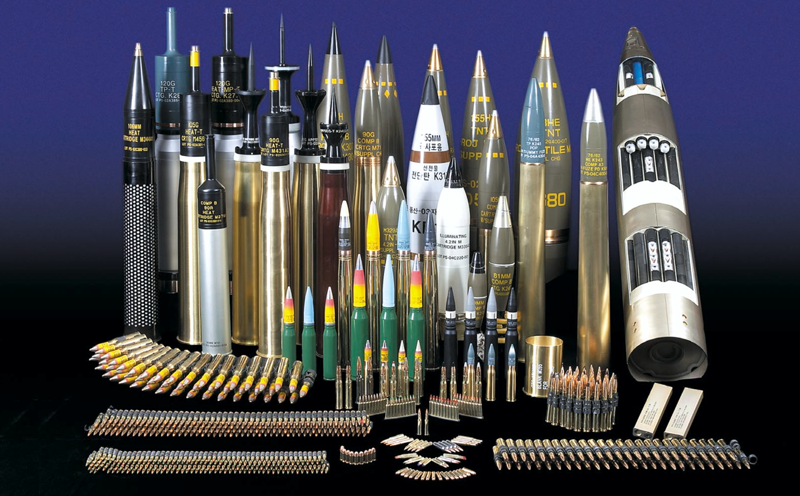
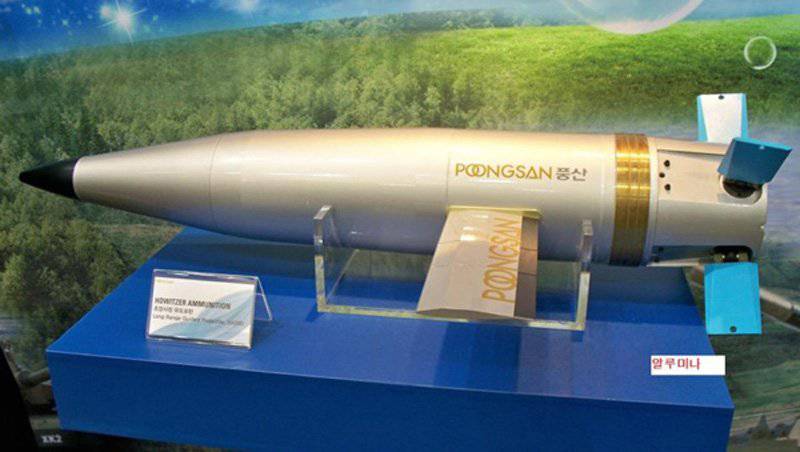
Artillery ammunition from the company Poongsan. Below experimental howitzer shell HKS00
Materials used:
Military Technology 7 / 2013
http://www.pof.gov.pk
http://www.iai.co.il/
http://www.selex-es.com/
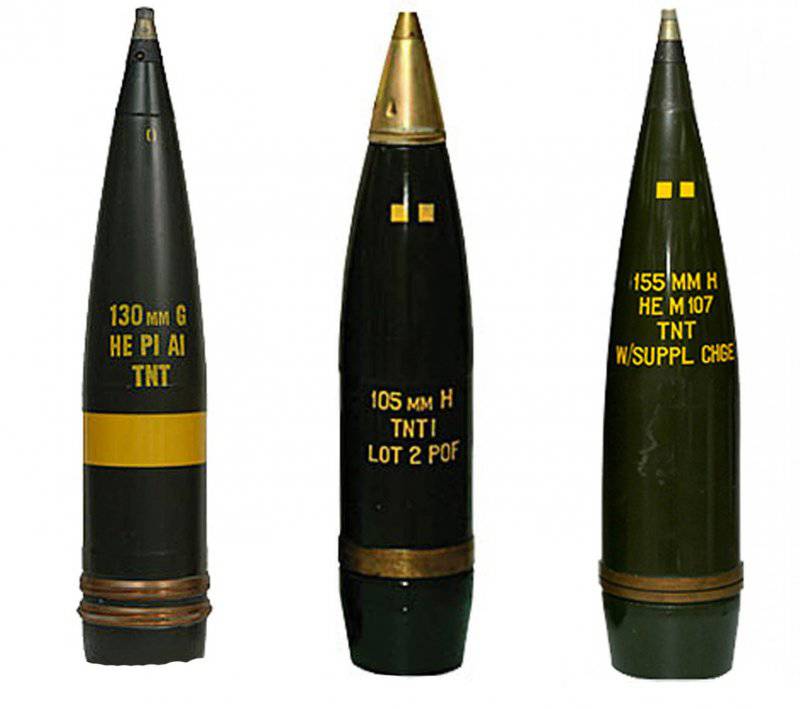
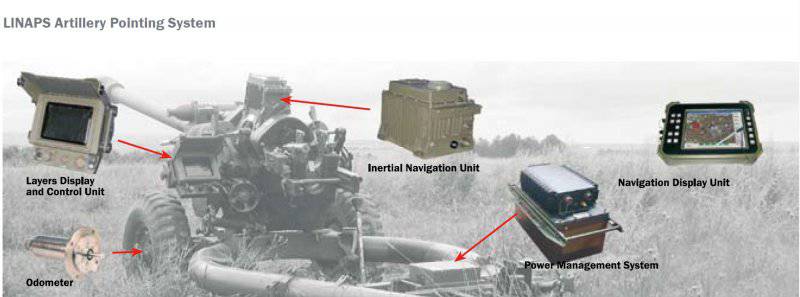
Information